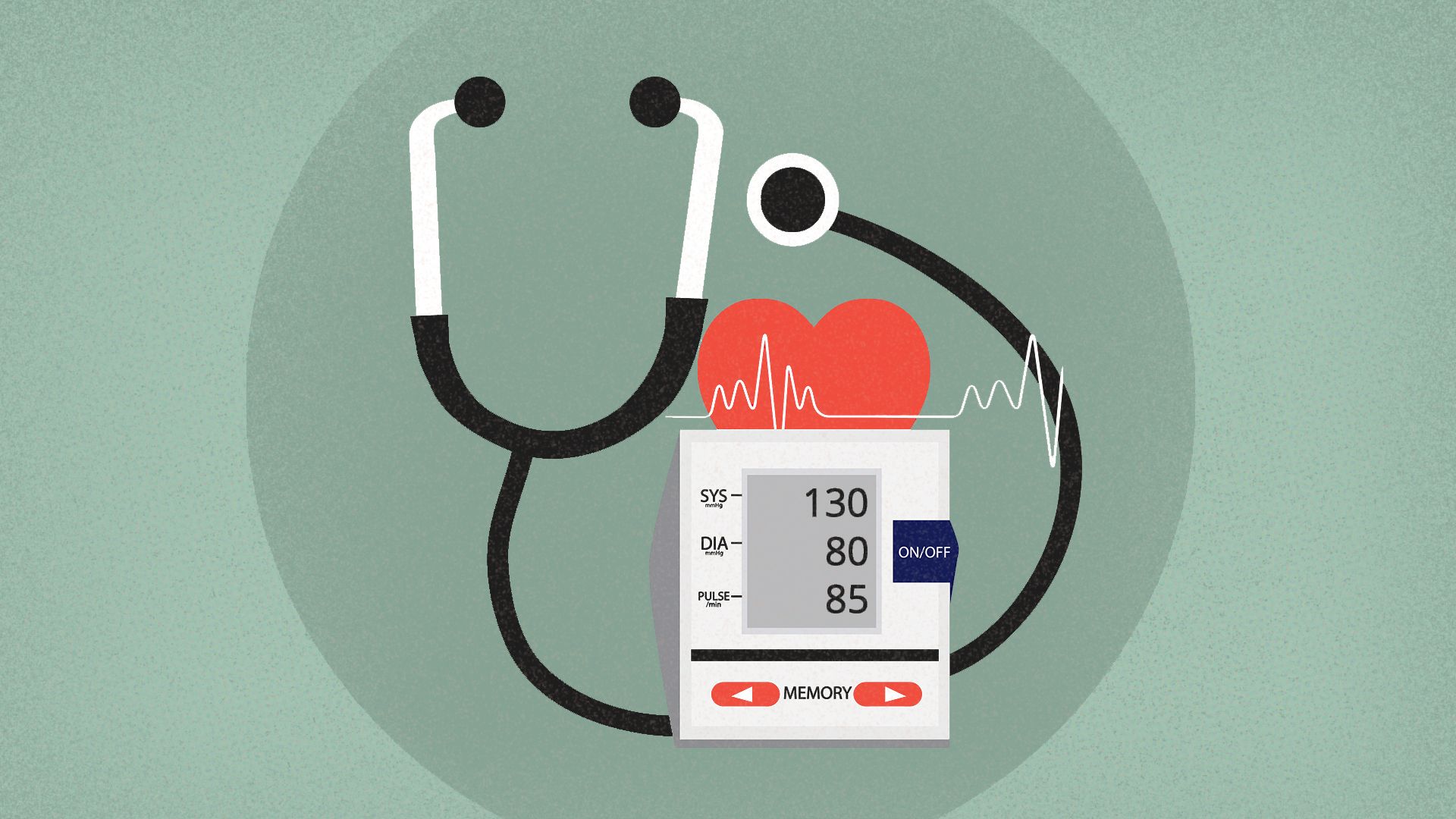Be it stressing over work, snoozing the alarm to go for a walk, or eating a pizza than something healthy, we make unhealthy choices daily that increase the risk of developing a lifestyle condition sooner or later in life. Every unhealthy choice you make increases the risk of high blood pressure or Hypertension.
In India, hypertension is the no. 1 health-related risk factor. According to a recent survey by the National Centre of Disease Informatics and Research, Bengaluru, 28.5% of adults in India are hypertensive, and only 27.9 % were aware of their hypertensive status.
Sadly, the awareness about Hypertension is low, and information about its treatment is lower. About 60-70% of people are unaware of their condition, which only adds to this condition’s threat to life! Limited or no awareness makes people overlook that Hypertension is treatable. Early diagnosis, timely medication, proper BP level monitoring, a healthy diet, and regular exercises reduce the severity of this condition and help you manage it well.
This blog offers much-need knowledge about the stages of Hypertension and how to treat high blood pressure.
Let’s take the step-by-step approach, shall we?
What is Hypertension?
Hypertension is a medical term used for high blood pressure. When the pressure exerted by the blood in your body against the blood vessels is too high, that is when you are said to be suffering from high blood pressure or hypertension. This is a lifestyle condition that is caused due to following poor lifestyle habits such as being inactive, eating unhealthy food, and living a stressful life.
This condition is not curable, but it is treatable. Early diagnosis and simple lifestyle changes, taking medications on time and monitoring your BP levels regularly can help you manage it well.
How is blood pressure measured?
Blood pressure is measured using a medical instrument called a sphygmomanometer, which enables a doctor to record the pressure exerted by the blood on your blood vessels in mmHg.
The systolic pressure is the blood pressure recorded when the heart contracts and is the first number in a reading. The diastolic pressure is a blood pressure reading when the heart relaxes between two beats and is the second number in a blood pressure reading.
What are the different stages of Hypertension?
There is more to hypertension than just high blood pressure. There are four stages based on different BP levels. Every stage needs to be treated differently to manage BP effectively. This section will discuss the BP levels in various stages and how to treat high blood pressure in these scenarios.
Normal Blood Pressure
A normal BP range is when your systolic pressure is less than 120mmHg, and diastolic pressure is less than 80mmHg. In this case, there is nothing to be worried about, and you are perfectly healthy. All you need to do is continue following a healthy lifestyle to avert the risk of Hypertension later in life.
Elevated Blood Pressure
Elevated blood pressure is recorded when the systolic pressure is between 120-129mmHg, and diastolic pressure is less than 80mmHg. The risk of elevated blood pressure increases when a person is overweight, indulges in smoking or consumes alcohol, or lives a stressful life. This condition also increases the risk of developing cardiovascular issues if early action is not taken. Therefore, along with the medication and regularly monitoring your BP levels, one must focus on staying active, managing an ideal weight, eating a healthy diet, and choosing low-fat dairy and low-sodium products.
Stage 1 Hypertension
Stage 1 Hypertension is declared when the systolic pressure is between 140 and 159mmHg, and diastolic pressure is between 90 and 99mmHg. In that case, your doctor may prescribe medication that focuses on reducing blood pressure and the risk of heart disease and stroke. You must take care of your health even more at this stage and diligently follow a doctor-recommended diet and exercise routine.
Stage 2 Hypertension
You are said to have stage 2 Hypertension when the systolic pressure is 160mmHg or higher, and diastolic pressure is 100mmHg or higher. In this case, a patient is recommended to make lifestyle changes along with medication that helps with BP levels. You may not find the combination of medicines that will work for you in the first go. Your doctor will have to experiment with different combinations of drugs to determine which is best for your body.
No matter which stage of Hypertension you are in, timely medication, regular blood pressure level monitoring, and following a healthy lifestyle are essential to keep your BP levels in check. It helps you be in the pink of your health and minimizes many heart risks.
Overview
Hypertension, also known as high blood pressure, is a common condition affecting millions of people worldwide. It is often called the “silent killer” because it can cause serious health problems, including heart disease, stroke, and kidney failure. Hypertension is classified into different stages based on the severity of the condition, and each stage requires a different approach to treatment.
In this unique overview blog, we will explore how to treat the different stages of hypertension. We will begin by discussing the definition and causes of hypertension, followed by the different stages of hypertension and the treatment options for each stage.
We will cover lifestyle changes such as exercise, diet, and stress reduction, as well as medications that are commonly used to treat hypertension. We will also discuss the importance of regular monitoring and management of hypertension to prevent further health complications.
Readers will better understand hypertension and how to manage it effectively. They will also learn about the importance of taking proactive steps to prevent hypertension and maintaining a healthy lifestyle to reduce their risk of developing hypertension.
Early action: A way to a hypertension-free life
Identifying hypertension early is always better than struggling with it after it has become untameable. Though this lifestyle condition does not show any sign of existence, the only way is to check your BP levels and consult a doctor immediately if you notice any abnormality in the readings. He will help you with the right treatment plan to help you manage it well or avoid it altogether.



